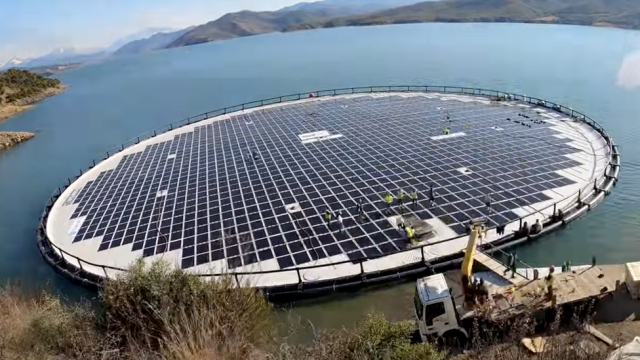Indonesia is a country made up of more than 10,000 islands. However, providing electricity to the entire country is challenging. Millions of people are not connected to the electricity grid at all.
“Those people who don’t have electricity are living on remote islands, so in this situation, it’s hard to connect a cable to them, and it’s hard to install other expensive solutions such as wind turbines,” says Loufeng Huang, a lecturer in mechanical engineering at Cranfield University.
Though solar power is an excellent way to provide energy to islands, it is currently cheaper to generate electricity in many areas of the country. Moreover, the International Energy Agency (IEA) says it is becoming the most affordable option for new electricity power plants.
On the other hand, solar farms take up lots of space, space we use for housing, farming, and business.
Therefore, Researchers and scientists are constantly working to establish different ways to install solar panels on the ocean surface, providing power to those onshore nearby.
“Floating solar is very convenient because it can just be put on top of the water, and if you need more electricity, you can put on more solar panels,” says Mr. Huang.
Researchers and scientists are testing to find ways to keep solar panels intact and working in rough water. Dutch-Norwegian company Solar Duck is working with RWE, a German energy company, to build a floating solar plant at a North Sea wind farm.
According to the company, it will be the world’s giant offshore floating solar plant, with a capacity to power a few hundred homes.
How Does It Work?
The solar panels will install on platforms raised several meters above the ocean surface. However, the plant is in the process of being operational in 2026. It will use the existing cabling for the wind farm to send electricity back to the shore.
“It has the effect that it dampens the waves and helps prevent the break of the waves,” says Borge Bjorneklett.
In addition, he also said that panels are lying completely flat, and the forces acting on them are end. Though, being close to the seawater also cools down the cells, which improves their Performance.
Solar Duck and Ocean Sun are looking at siting solar farms alongside wind turbines, which will help to smooth the flow of electricity when the wind is not blowing.
“If you lift it, you need some powerful support, so it’s just going to cost too much money.”
If we talk about the Ocean Sun system, Mr. Huang could have been more impressed by the approach that it will sufficiently protect the panels from wave damage.
Mr. Bjorneklett said that his company’s system might need to be revised for the North Sea with its 30(ft) 9m waves.
“We believe near-shore locations, with more benign sea states, are more attractive.
On the other hand, Mr. Huang’s team is working on an alternative offshore solar plant, which he says is relatively cheap and robust.
According to Mr. Huang, the main aim is to keep the breakwater cheap: “any damage will be in the breakwater part, which is very cheap and easy to maintain and replace.”
Hence, any solar ocean farm installation and maintenance cost will be high. Such farms will only be the way to supply renewable energy in some densely populated parts of the world.
For instance, “in Singapore, the cost of land is very high, and they have already utilized most of their rooftop surface area,” says Mr. Bjorneklett.
“If they can utilize the ocean surface outside Singapore, it is the only way to provide affordable renewable energy, and there is a similar situation in other large parts of South East Asia as well.”
Solar farms will install far out at sea level, where they could serve as refueling points for electric ships.
Read more:
Study Shows That Solar Farms in Space Can Generate Electricity For the Whole World
Floating Solar Farms could be environment’s next game-changer





 Ways To Make A Fiber-Optic Cable Out Of Air Using A Laser
Ways To Make A Fiber-Optic Cable Out Of Air Using A Laser